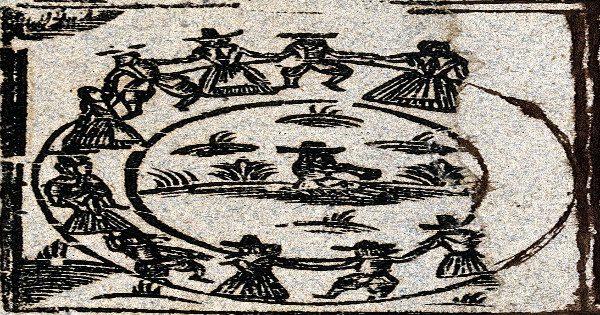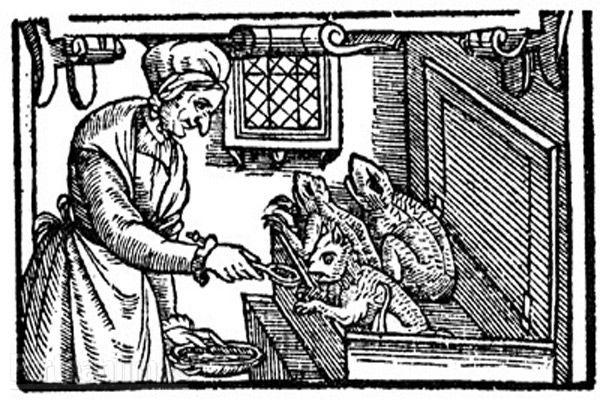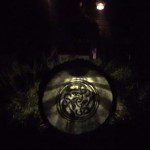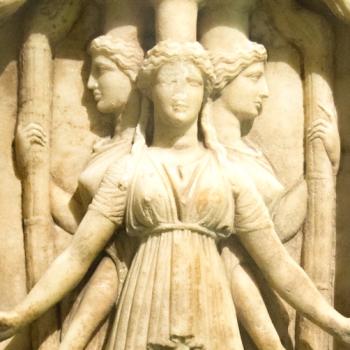I started teaching a Wiccan-Witchcraft 101 class in March of this year. It’s mostly been an enjoyable experience. My students (which is a very weird thing to type) are all great. They are extremely receptive and genuinely excited about class. Class starts at 7:30 PM, most of them are there by 7:15 PM, about the time I walk through the door.
Actual “class time” feels less like class and more like hanging out with a group of friends discussing the Craft. There are nights I probably talk too much, but I try and make an effort to do things when we are together. It’s one thing to talk about goddesses and gods, another thing entirely to invite them into your space.

I think Wiccan-Witchcraft is a hands on spiritual tradition, and not one that concerns its self with a lot of theology or theoretical stuff. Last night for example was “energy raising” night so we didn’t just talk about raising energy, we cast a circle and got to work. (And I think most people left a little tingly-mission accomplished!)
MORE WORK THAN I IMAGINED
I came up with a syllabus for my class almost six months before we actually started the thing, but turning specific agenda items into actual 90 minute classes has been a bigger challenge than I thought it would be. I can probably talk about any one specific Craft-related thing for an hour or two, but is that what really what my students want? A 101-class is not the blogosphere where we sometimes debate how many angels fit on the head of a pin for days on end.
A lot of it always comes back to the doing . . . . people want to learn to do stuff, and I have to figure out a way every other week to make sure I’m getting the right ideas across while making things interactive. Of course there are times when the interactive part does fall by the wayside. To the dismay of some attendees we didn’t draw down the moon for example; there are just some things that don’t fit into a classroom setting.
Last night’s magick and energy class quickly moved away from my original idea of “I’ll just have everyone raise energy for 90 minutes” to something mixing the theoretical and the practical. Before you one can raise energy there has to be some discussion as to just what energy actually is. So we began with Crowley’s definition of magick, to the formula needed for most spell work, to finally raising energy in group and individual settings.
CLASS NOTES 6/14
What is Magick?-Definitions (Crowley/Cunningham/Tyson/Me)
How Does One Practice Magick?
Constructing a Spell: Creative Visualization, Intent, Execution, Extras, Release
Spells as a Puzzle/Magick Is an Art and a Science
Ways to think of Energy: Sporting Event, Anger Filling a Room, Feeling Energy Between Your Hands
What is the Cone of Power? Operation Cone of Power
(Break)
Cleanse Space (Chime and Sage)
Casting a Circle
Magick From the Earth: Drawing it Up
Raising Energy Individually: Flexing Muscles
Raising Energy As a Group: Toning, Movement, and More
The Inverse Cone of Power: A High Priestess’s Magickal Death Ray (you’ll have to wait until that’s in my next book!)
Teaching in more of a classroom type setting also requires me to think of everything I talk about in more specific terms than I generally do. How many books have we all read over the years that simply say “Build the Cone of Power?” Most of those books never stop to answer just what the cone of power is, why it’s called a cone of power, and how it works. Saying “build the cone of power” doesn’t really constitute a teaching moment.
More than just figuring things out for myself I’m finding things out about my wife (and some of my fellow Witches) that I was previously unaware of. How I conceptualize the cone of power is not necessarily how Ari sees things, and some of the ways she sees things feel, if not revolutionary, at least superior to some of the more established ways of doing things in the Craft.
Why has this all added up to more work than I thought it would be? Because each 90 minute class properly requires a good four to six hours of prep time. Counting driving time, pre and post class socializing/question taking, and I’m probably spending eight hours a week on every class I teach. That’s not a complaint, I’ve been loving this whole experience, but I’m starting to feel a little less guilty for being compensated for it all.

THE TEACHER/STUDENT THING DOESN’T JUST “END” AFTER CLASS
Despite having read in other places that I’m an unapproachable diva*, my students must feel pretty comfortable with me because many of them have asked me questions outside of class. Some of them have been pretty standard (how do I build an altar?) while others have been far more complex. Because of class I’ve written new rituals for those who have passed on to the next plane, and magickal operations to reunite a mother with the soul of her deceased daughter. Not the standard sort of stuff I tend to write over the course of a day, but I’ve been happy to do it.
The great thing about all of this is that I always envisioned the teacher/student relationship existing outside of class, because there’s no way ten 90 minute Witchcraft classes can convey everything, or even 25% of the Craft. I’ve been doing this stuff for twenty years now, and in ten weeks I’m only going to able to realistically pass on a little bit of that. The more questions the better!
So the last part has been really gratifying, even if it has ended up with me jumping down a few unanticipated rabbit holes. In fact I’ve enjoyed teaching so much I’m probably going to do it again this Fall.
*No, I’m not sharing such links, and I’m really a pretty nice guy. Don’t mistake a bit of shyness now and again for being an asshole.

















